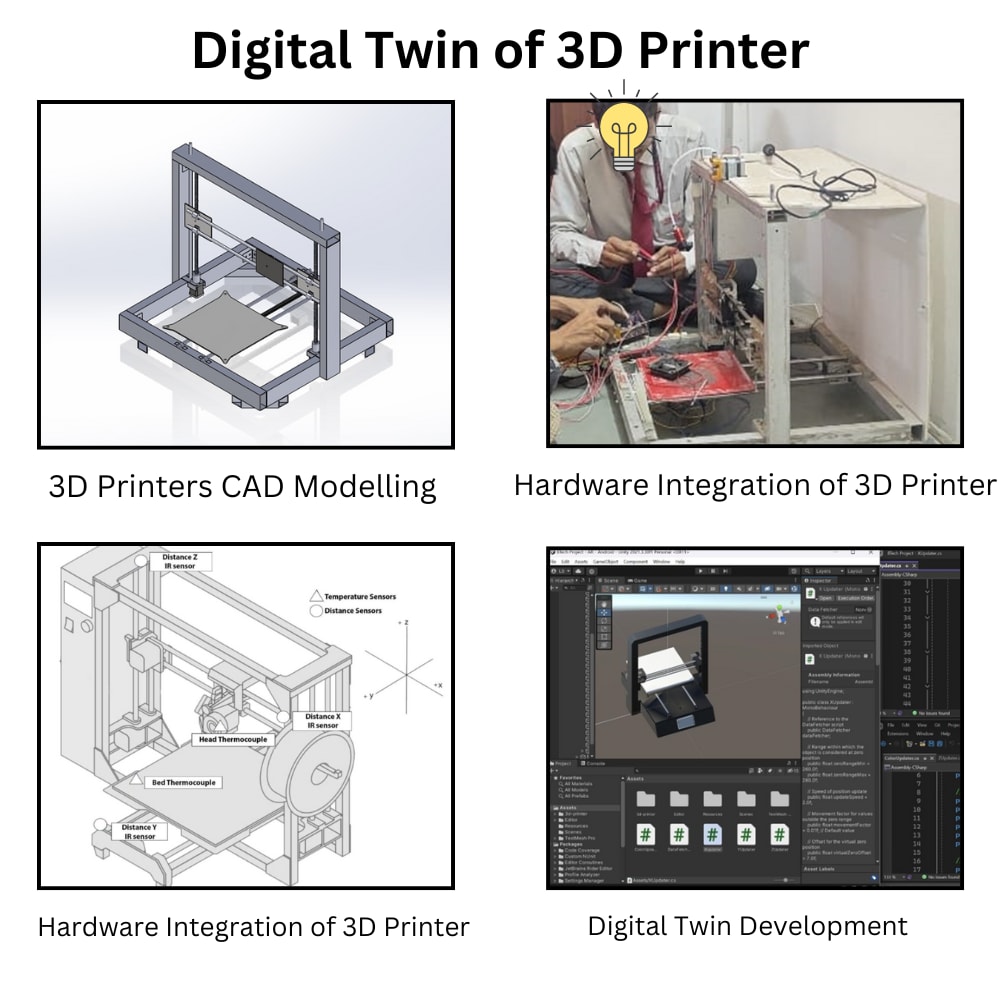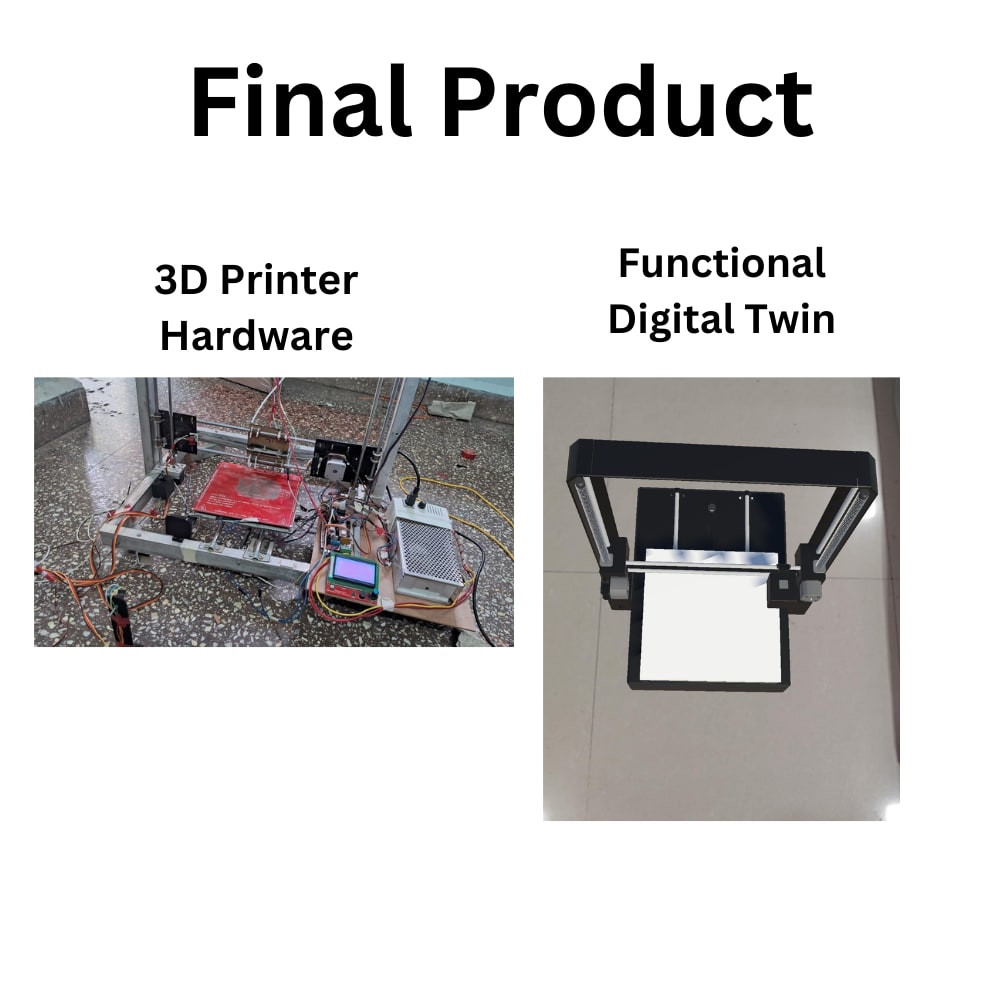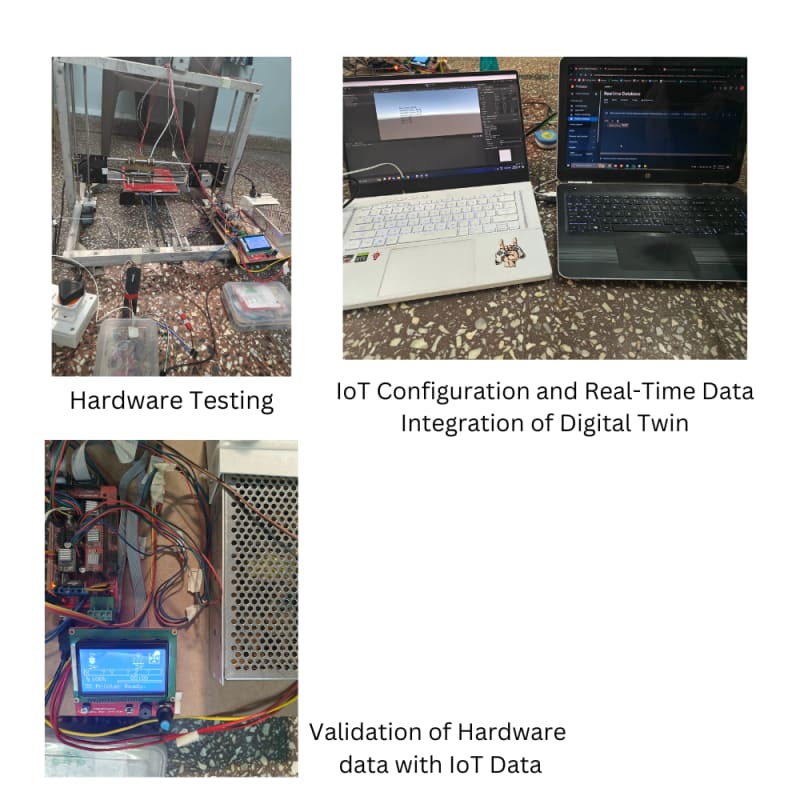

The "Digital Twin of 3D Printer" is an innovative concept that creates a virtual replica of a physical 3D printer, enabling real-time monitoring, simulation, and optimization of the printing process. This digital twin integrates advanced technologies such as IoT, AI, and cloud computing to provide a comprehensive and dynamic model of the 3D printer's operations.
How It Works
The digital twin captures data from the 3D printer using a network of sensors. These sensors monitor various parameters, including temperature, humidity, print speed, and material flow. This data is transmitted in real-time to the digital twin, which resides in a cloud-based platform. The digital twin uses AI algorithms to analyze the data, providing insights into the printer's performance and predicting potential issues before they occur. Users can interact with the digital twin through a user-friendly interface, allowing them to visualize the printing process, adjust parameters, and simulate different scenarios.
Novelty
The novelty of this entry lies in its ability to provide a real-time, virtual representation of a 3D printer. Unlike traditional monitoring systems, the digital twin not only tracks current performance but also predicts future states and optimizes the printing process. This predictive capability is achieved through the integration of AI, which learns from historical data to improve accuracy and efficiency. Additionally, the digital twin facilitates remote monitoring and control, making it possible to manage multiple 3D printers from a single location.
Production
The digital twin system can be produced using commercially available sensors, cloud infrastructure, and AI software. The sensors are installed on existing 3D printers without requiring significant modifications. Data from the sensors is transmitted to the cloud platform, where the digital twin is hosted. AI algorithms are trained using historical data from the 3D printers to create accurate predictive models. The system is designed to be scalable, allowing for easy integration with different types and models of 3D printers.
Application
The primary application of the digital twin is in the additive manufacturing industry, where it can be used to enhance the efficiency and reliability of 3D printing operations. By providing real-time insights and predictive analytics, the digital twin helps manufacturers reduce downtime, minimize material waste, and improve product quality. Additionally, the digital twin can be used in research and development to simulate new printing techniques and materials, accelerating innovation in the field.
In summary, the Digital Twin of 3D Printer is a novel, feasible, and marketable solution that enhances the capabilities of 3D printing through real-time monitoring, simulation, and optimization.
Video
-
Awards
-
 2024 Top 100 Entries
2024 Top 100 Entries -
 2024 Top 10 Most Popular
2024 Top 10 Most Popular
Like this entry?
-
About the Entrant
- Name:Pratik Mane
- Type of entry:teamTeam members:
- Yash Pawar
- Patent status:pending








